By JOSEPH R. POLENZANI
Firefighters with hotels or motels in their districts know that these occupancies come with their own sets of challenges. Hotels combine commercial building characteristics such as large footprints, integrated fire protection systems, and security measures with a residential environment—i.e., sleeping occupants and the potential for 24-hour occupancy. One of the advantages firefighters have in responding to calls in hotels and motels is that they are usually provided with a set of master keys or keycards that unlock every room in the building.
Primary and Secondary Locks
Unfortunately, occupied rooms are often secured with a secondary lock such as the swing bar door guard (photo 1) or the privacy door latch (PDL) (photo 2). In an emergency, a set of irons or a hydraulic forcible entry tool can easily defeat both types of secondary locks. The components of these locks are typically secured to the face of the door and frame with two or three small-diameter screws (#12 or similar). Once you have opened the primary lock, you can apply spreading pressure to the door near the secondary lock until the mounting screws or locking device fails. However, in nonemergency situations such as welfare checks, sick calls, or lift assists, look for ways to minimize damage to the property while still gaining access to the room as quickly as possible.
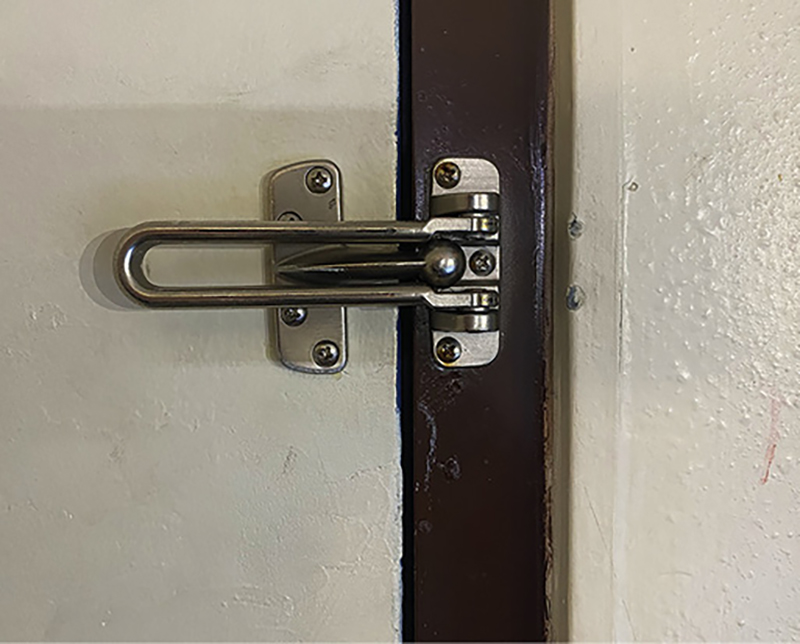
(1) Photos by author.

(2)
RELATED FIREFIGHTER TRAINING
Although commercial tools are available for unlocking both the swing bar lock and the PDL, they cost between $20 and $40 and are not typically carried by fire departments (photo 3). Many hotels are also reluctant to invest in these tools, leaving maintenance personnel to make their own access tools (photo 4) or simply force the locks off the door frame when they need to enter a locked room. Fortunately, hotels and motels often provide us with a tool to bypass both types of locks, and firefighters can frequently find it hanging in the hallway for easy access: the “Do Not Disturb” sign.
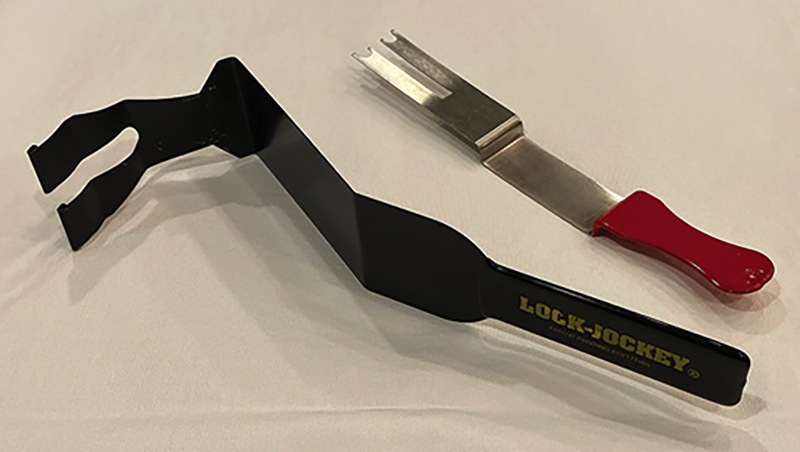
(3)

(4)
Of the two common types of secondary locks, the swing bar door guard is the older of the two. It consists of a post with a ball-shaped end that mounts to the door and a swinging U-shaped bar that mounts to the door frame. When the lock is engaged and the door is opened, the post slides down the center of the U-bar and is stopped by the ball (photo 5). You can disengage the U-bar from the post only when the door is completely (or almost completely) closed.
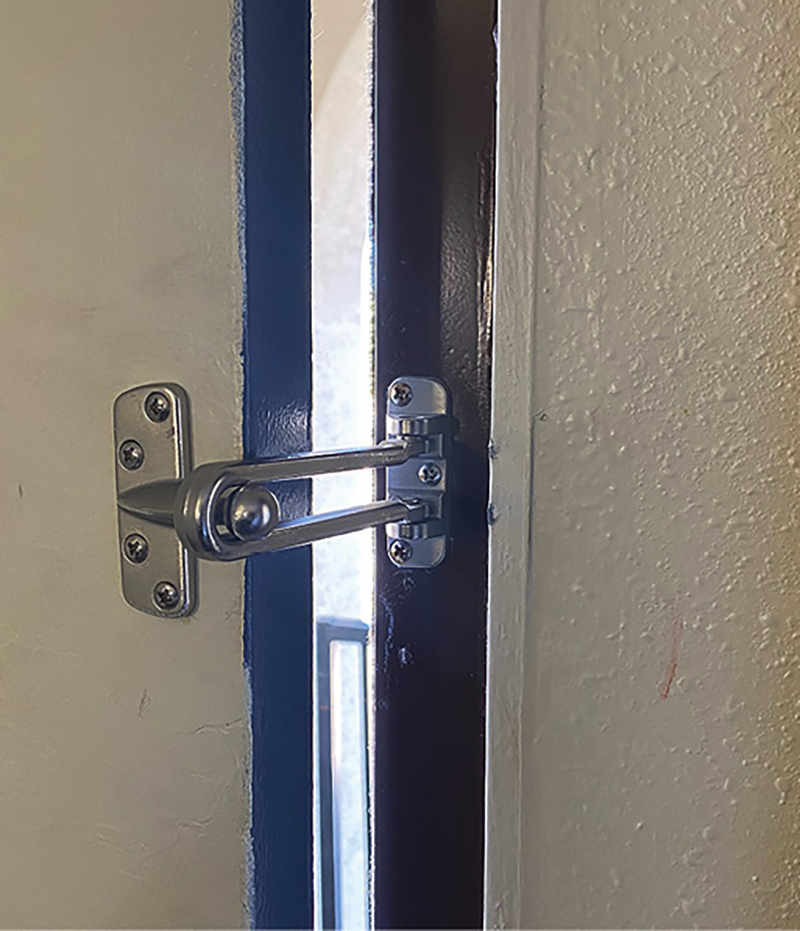
(5)
To bypass a swing bar door guard with a “Do Not Disturb” sign, follow these steps:
- Disengage the door’s primary lock using the key or keycard provided by the hotel and open the door as far as the swing bar lock will allow. Keep the key handy, as the door may need to be unlocked again after you open the secondary lock.
- Hold the “Do Not Disturb” sign horizontally and insert the solid end (the end without the doorknob cutout) through the gap between the door and frame, just below the swing bar lock (photo 6).
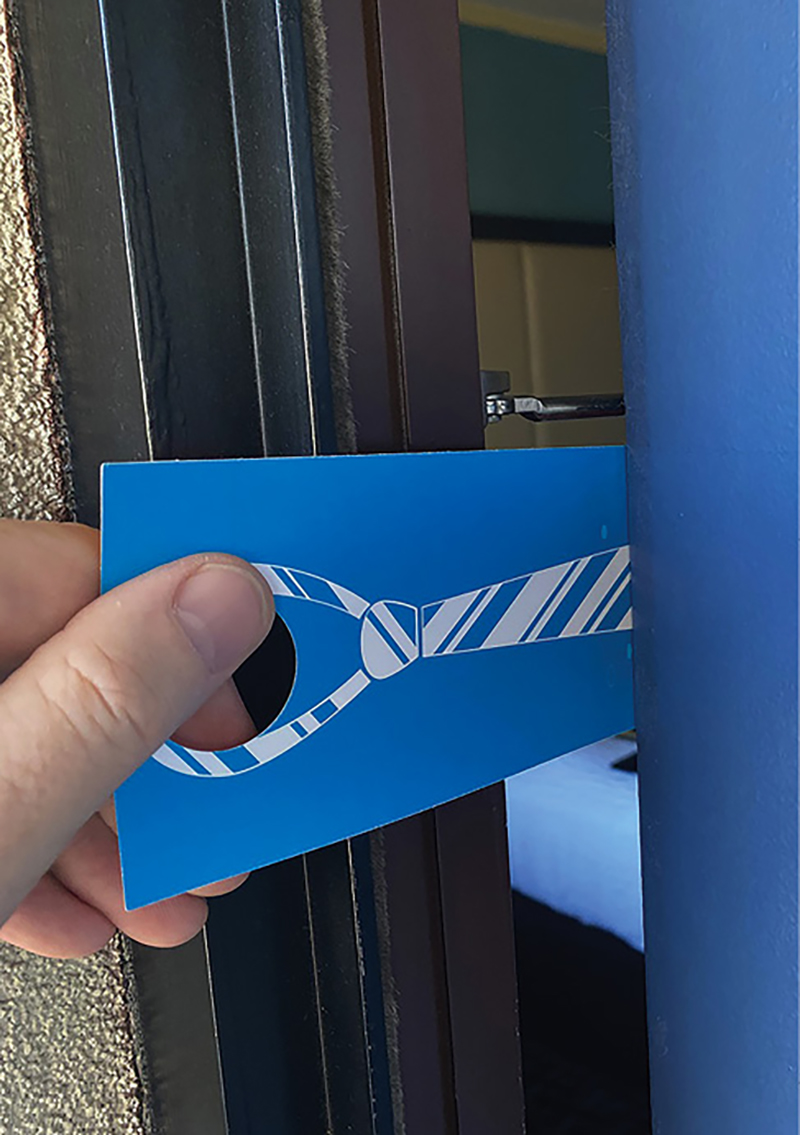
(6)
- Slide the sign upward until the top edge of the sign contacts the lock’s post and the sign’s face is flat against the bottom of the U-shaped swing bar (photos 7, 8). The tip of the sign should extend approximately ½ to one inch past the end of the swing bar.
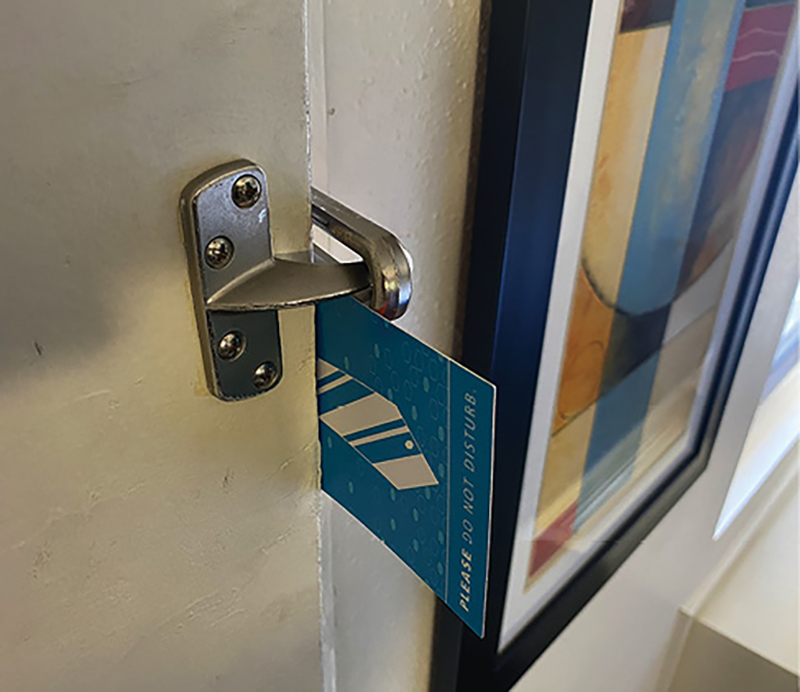
(7)
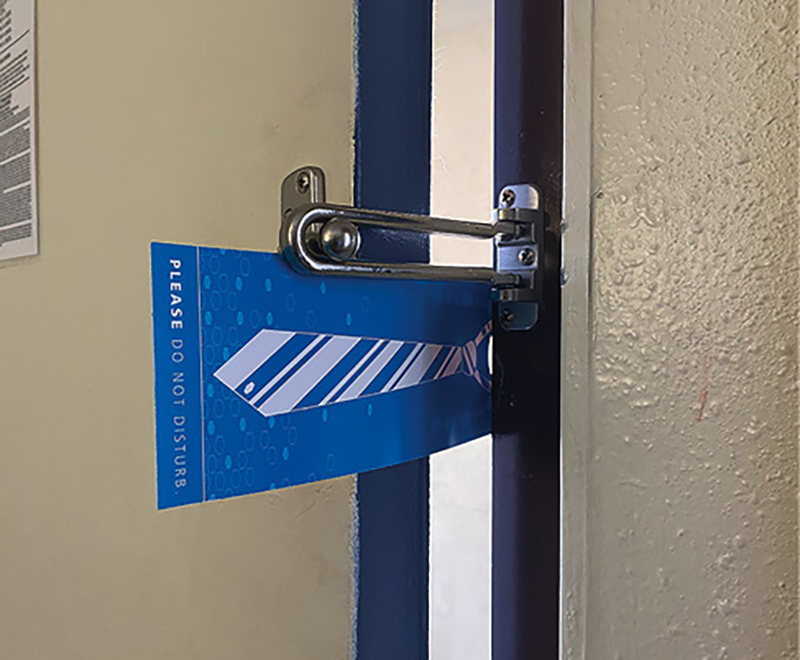
(8)
- While holding the sign in place with one hand, use the other hand to close the door completely. Close the door in one quick, smooth motion; you do not need to slam it. It is important that you do not move the sign out of position while the door is being closed.
- As you close the door, the swing bar will bend the “Do Not Disturb” sign, essentially turning it into a flat spring (photos 9, 10). Once the door is closed, the swing bar is released from the post and ball and is pushed into the unlocked position by the sign (photo 11).

(9)

(10)
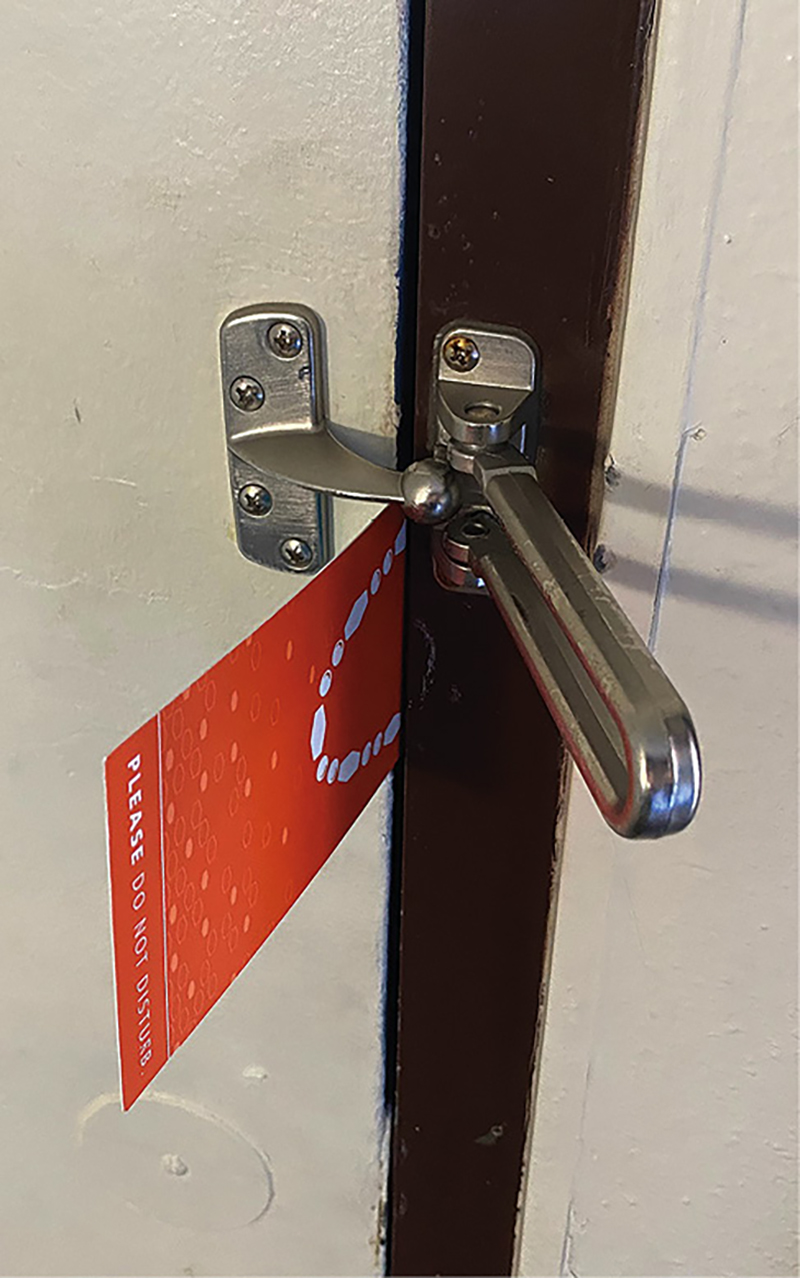
(11)
- You can now open the door using the key or keycard on the primary lock, if necessary.
If the swing bar does not completely clear the post and ball, simply close the door to reset the swing bar, reinsert the “Do Not Disturb” sign, and close the door slightly and more rapidly than the first time. The key here is to keep the edge of the sign resting against the lower leg of the swing bar.
The PDL is a newer secondary lock that is quickly replacing the swing bar door guard. One of the chief disadvantages of the swing bar lock is that it can be used to prop open a self-closing hotel door, which presents both a fire safety hazard and a security risk. By contrast, the PDL is Underwriters Laboratories classified as a fire door accessory and meets the requirements of National Fire Protection Association 80, Standard for Fire Doors and Other Opening Protectives, which requires that auxiliary hardware not interfere with the operation of fire-rated doors and that fire doors are not blocked or wedged in an open position. From a maintenance point of view, the PDL only requires hardware to be installed on the door frame instead of both the door and the frame, which simplifies installation. The PDL also eliminates the damage to door edges caused by the swing bar lock when the door closes on the U-bar.
To bypass a PDL with a “Do Not Disturb” sign, follow these steps:
- Cut a small right triangle-shaped notch in the solid end of the “Do Not Disturb” sign with one of the triangle’s legs parallel with the solid end of the sign and the hypotenuse running back toward the end of the sign with the doorknob cutout (photo 12). The notch should be approximately ¾-inch deep and should be located between one and two inches from the end of the sign. Although the exact depth and location of the notch are not critical, making the cut too deep or placing it too close to the end of the sign will weaken the sign and make opening the lock more difficult. Try to make the cuts as neatly as possible; any overcutting will also reduce the sign’s strength.
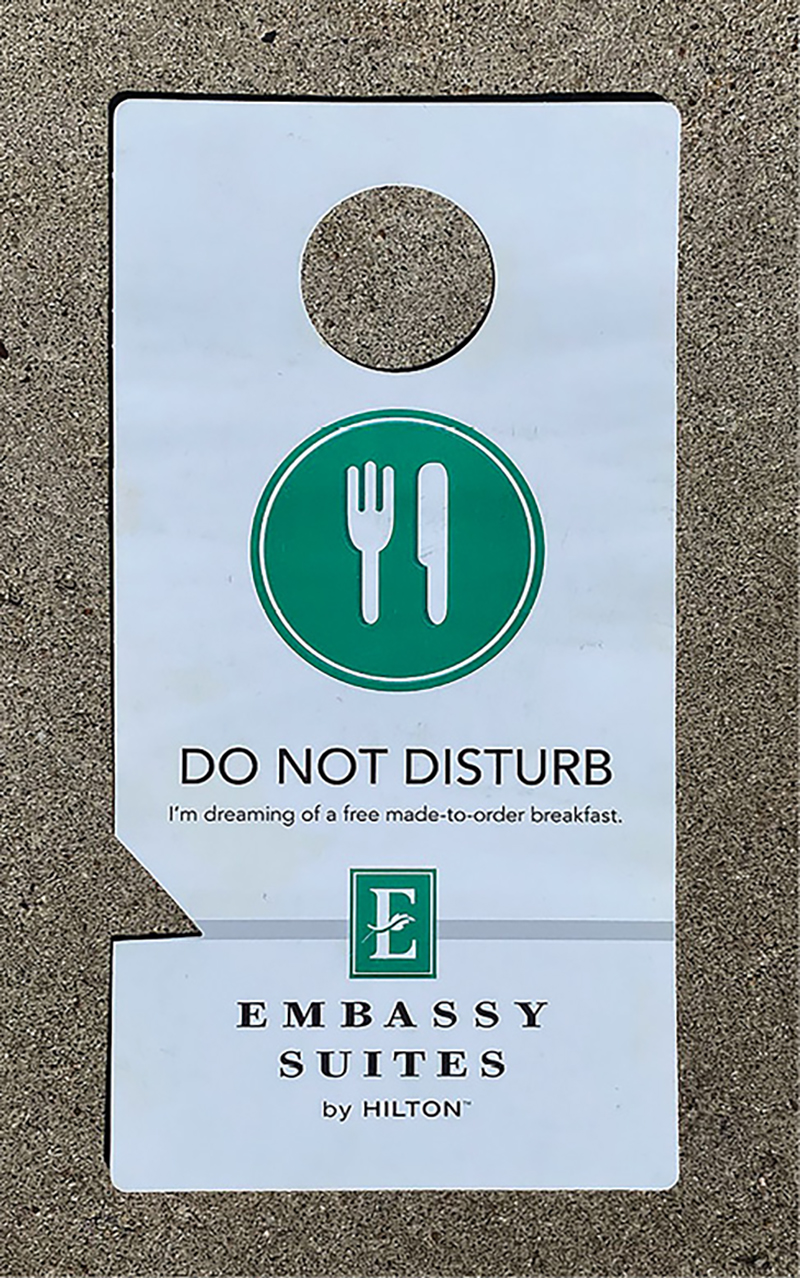
(12)
- Disengage the door’s primary lock using the key or keycard provided by the hotel. Again, keep the key handy, as the door may need to be unlocked again after the secondary lock is opened.
- Hold the “Do Not Disturb” sign horizontally with the notch facing down, and insert the solid end through the gap between the door and frame, just above the privacy door latch.
- Lower the notch over the latch’s swing arm and apply gentle downward pressure to keep the top edge of the swing arm in the notch (photo 13).

(13)
- Using one hand to hold the sign and the other hand to operate the door, close the door while simultaneously pulling the sign back through the gap between the door and the frame. The door should be closed at a steady pace, slightly slower than you might typically close a door. The key is that the door and sign must both travel at approximately the same speed (photo 14).

(14)
- As the door closes, the sign will begin to pull the swing arm into the unlocked position. Once the door is closed, the swing arm can pivot past the face of the door and into its unlocked position (photo 15).

(15)
- Stop pulling the sign when the door is completely closed, and do not remove it from the door frame until the door has been completely closed and reopened. Ideally, if the swing arm does not pivot all the way into the unlocked position, the face of the sign will push it the rest of the way in as the door is opened (photos 16, 17).
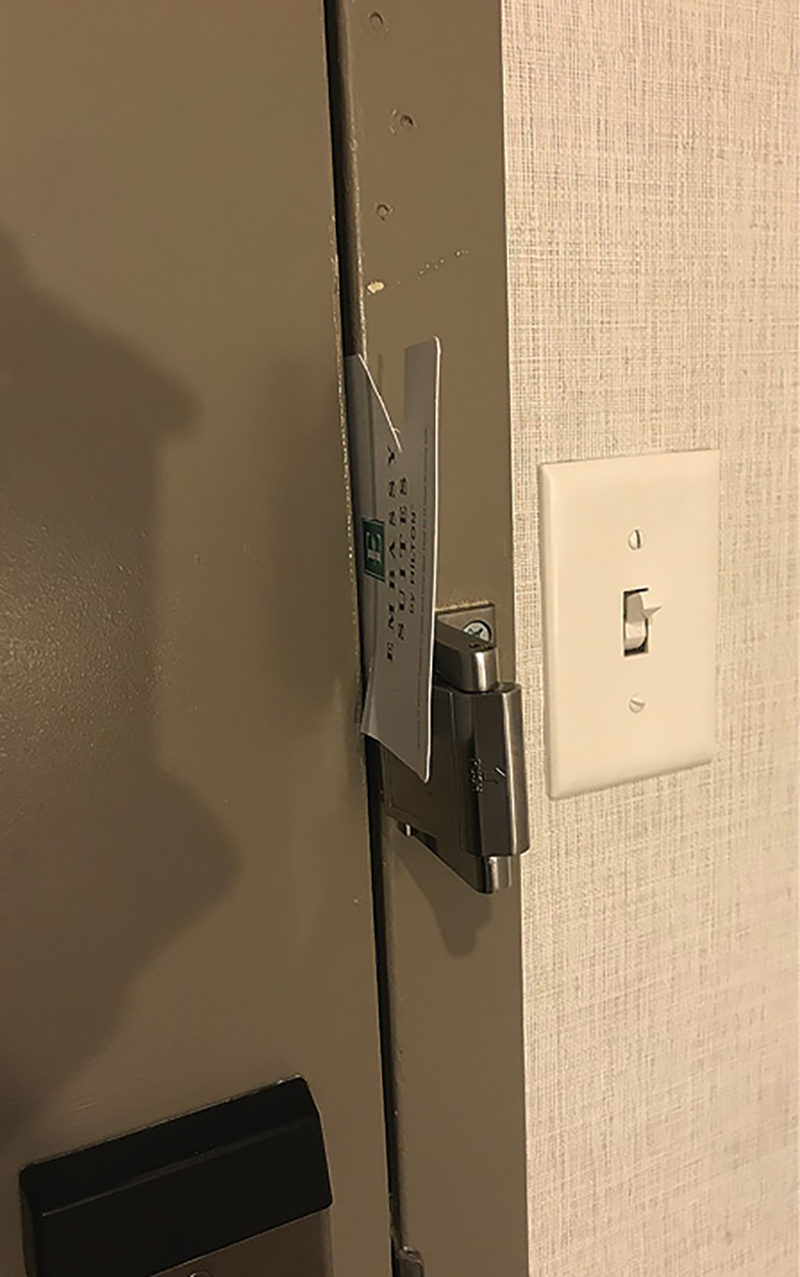
(16)
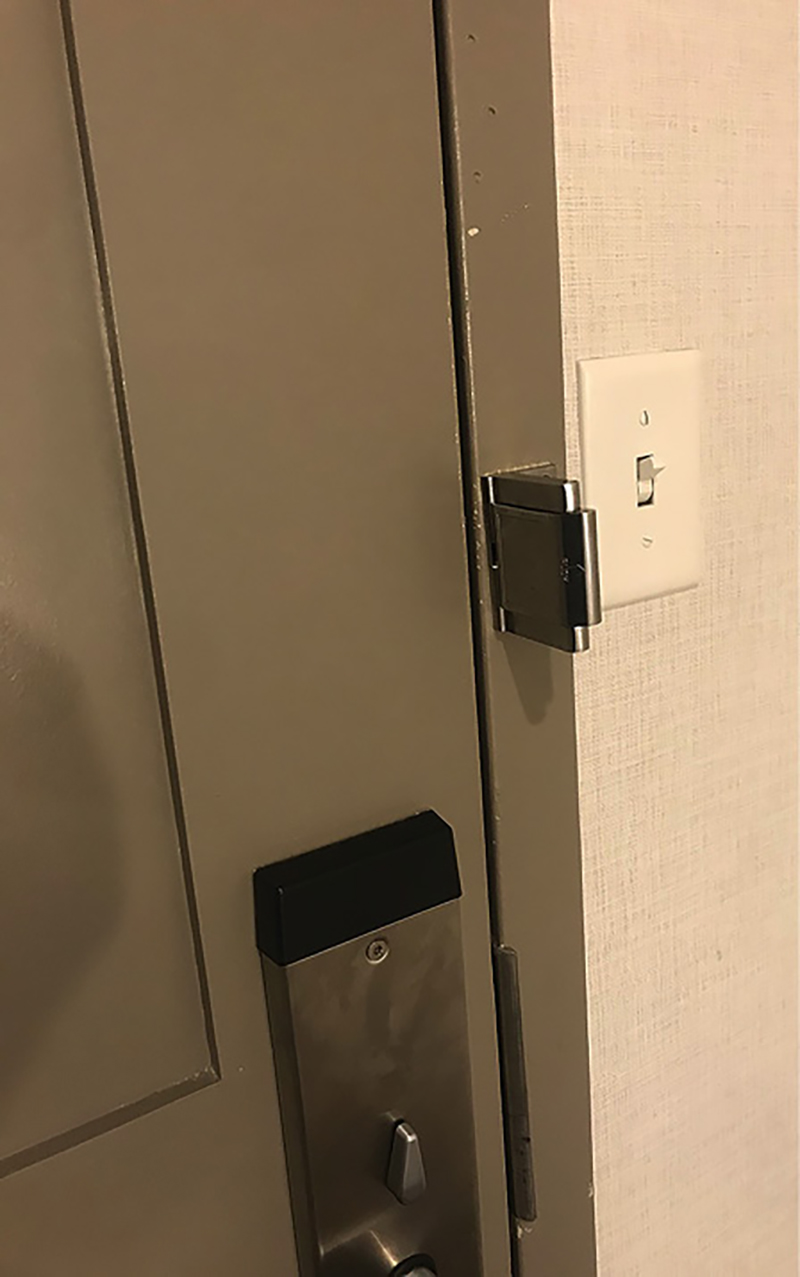
(17)
Although it is possible to perform this technique using the sign’s doorknob cutout rather than making a triangular cut, the flap at the end of the cutout is much weaker, and it will frequently slip off the swing arm.
Some newer hotels use smaller T-shaped “Do Not Disturb” signs, which slide into the key card slots on the exterior of each door. These signs are generally too short to use with the techniques described above. Many boutique hotels are also doing away with the traditional plastic or cardboard signs and replacing them with indicator lights or unique door hangers that match the hotel’s brand or image. If, in the course of preplanning, you identify one or more of these hotels in your district, you will have to obtain a few of the larger “Do Not Disturb” signs from other hotels and keep them on the rig or in your turnout pocket.1 You can also save time by precutting the notch into your sign so it will be ready to open both types of locks.
If you encounter one of these locks in a residential setting and an actual “Do Not Disturb” sign isn’t available, you can cut a substitute tool from a piece of thin cardboard such as the side of a cereal box or rubber glove box. Although the cardboard tools will not have the durability of plastic or laminated “Do Not Disturb” signs, they will work in a pinch. Companies that have made shove knives or lock shims from bleach jugs or similar plastic containers will find that they work very well for these techniques, provided they have a hook or notch at one end for the PDL and a flat edge to line up against the U-shaped bar on the swing bar door guard. I carry a 3½- × 8½-inch rectangular piece of clear 7-millimeter polyester film cut out of an old bass drum head, and it has proven to be both durable and effective.
Sometimes, you can use a metal shove knife to unlock the swing bar door guard by inserting it through the space between the edge of the door and the door jamb and then pushing the U-shaped swing bar off the post and ball. You may also use the shove knife to retract the swing arm on the PDL. However, the thickness and inflexibility of most shove knives (especially homemade ones fashioned from putty knives or 5-in-1 painter’s tools) make this method impractical on most well-fit doors. A better option is a “Slim Jim” vehicle unlocking tool made from thin (1⁄64-inch) flexible spring steel. You can use the hook on the tool’s working end to retract the PDL, while the tool’s butt (handle) end can be used to spring open the swing bar door guard.
With practice, you can bypass the swing bar door guard and the PDL in the same amount of time it would take to unlock a deadbolt or other keyed secondary lock. As professionals, we owe it to the public to be proficient in entry techniques for both emergency and nonemergency situations. The “Do Not Disturb” sign is an inexpensive and effective tool for us to add to our toolbox.
Endnote
1. Hotel staff are generally willing to provide firefighters with a few extra “Do Not Disturb” signs for firefighter training or response purposes, especially if you offer to teach their maintenance or security personnel how to use the signs to unlock the doors in their building.
JOSEPH R. POLENZANI is a 29-year fire service veteran and a battalion chief with the Franklin (TN) Fire Department, where he has served since 1998. He began his career as a volunteer with the Ashland City (TN) Fire Department. Polenzani also serves as a volunteer firefighter/engineer with the Williamson County (TN) Rescue Squad. He has a bachelor’s degree in fire administration and is a fire officer IV, a fire instructor II, a safety officer, and an apparatus operator. He has presented classes at FDIC International and has written for Fire Engineering.
Joseph R. Polenzani will present “Mobile Homes: Small House, Big Challenge” at FDIC International in Indianapolis, Indiana, on Wednesday, April 27, 2022, 3:30 p.m.-5:15 p.m.

